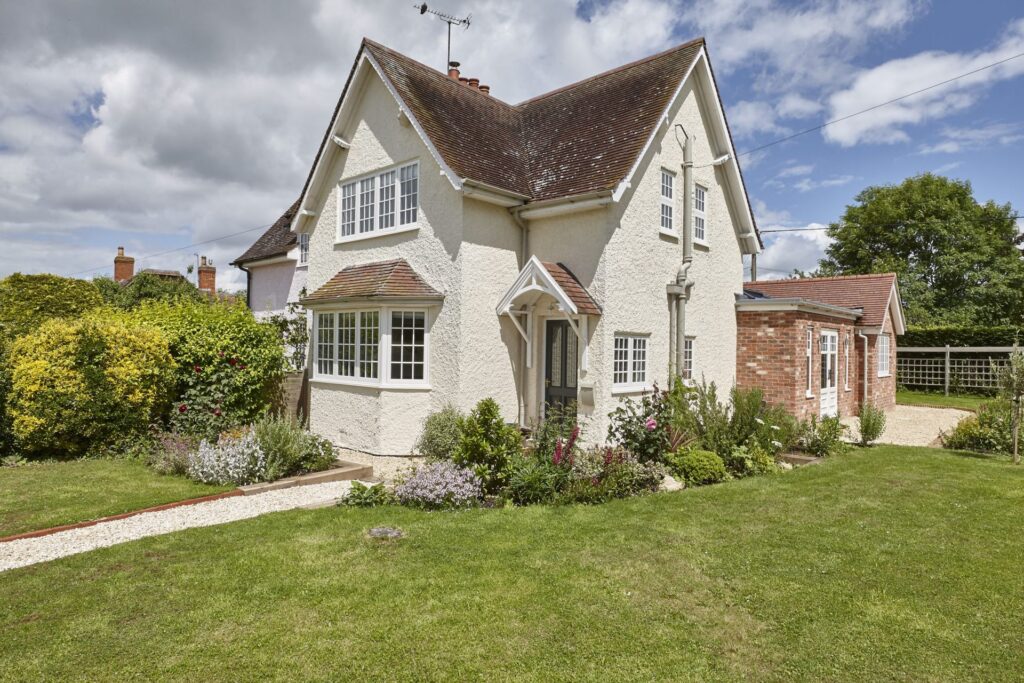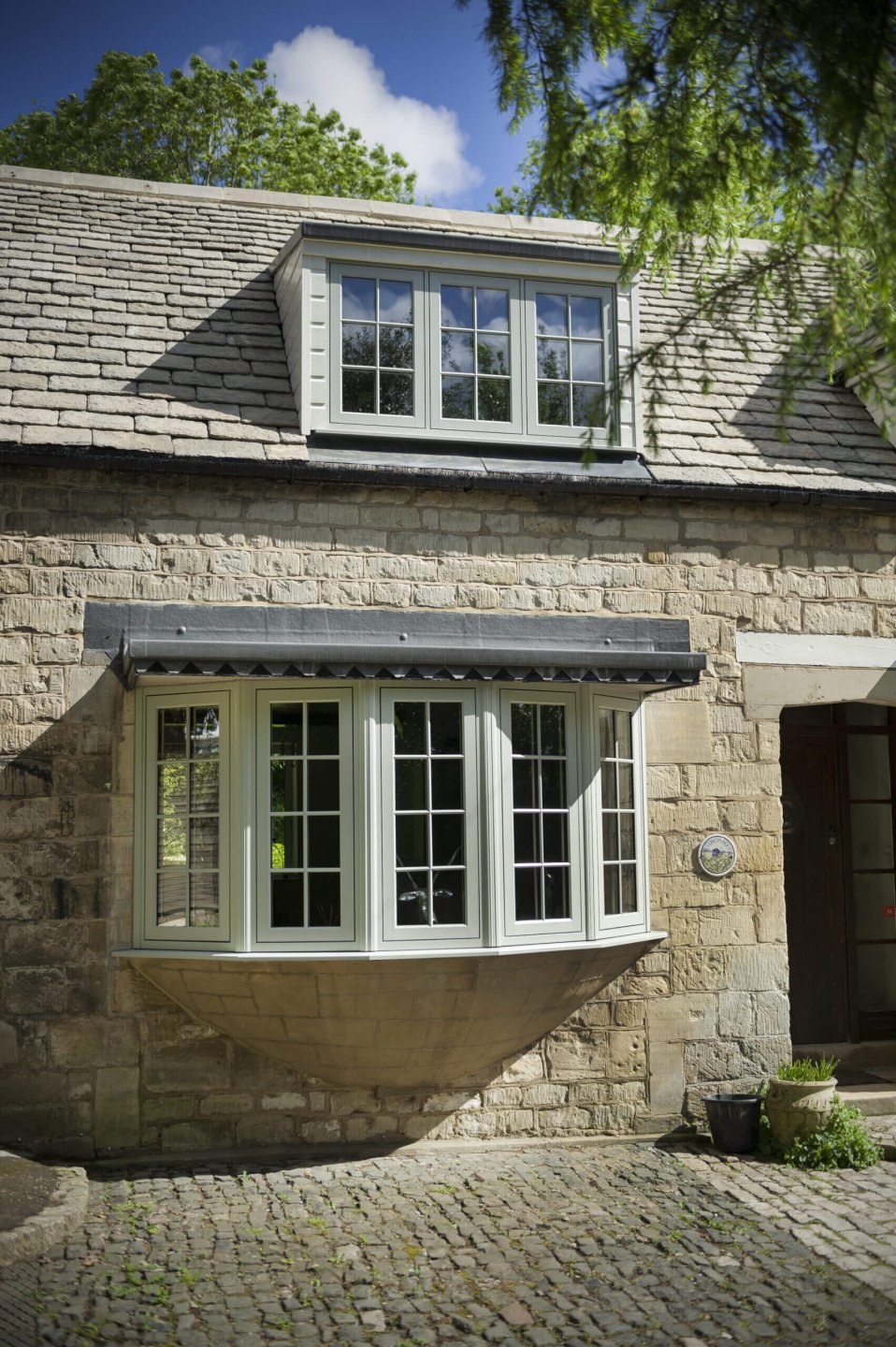What Is the Difference Between Bay and Bow Windows?
Choosing the right window can make all the difference when it comes to the look and feel of your home. Two popular styles of windows that project outwards and that can elevate your home’s appeal are Bay and Bow windows.
Enhancing the natural light and external and internal spaces of your home can dramatically improve your quality of life, reduce the cost of your energy bills, and increase the value of your property.
Bay and Bow windows are both similar-looking installations, yet they are so different in their designs. So, what is the difference between Bay and Bow windows?
Understanding their differences can help you make a well-informed decision that suits your home’s design and your personal preferences.
Here, we will delve into the world of Brackenwood Bay and Bow windows, exploring their characteristics, function, and value.
A Brief History of Bay Windows
Bay windows originated in the English Renaissance Period (late 15th century – early 17th century). The majority of these windows were actually Oriel windows – a type of window that extends from a building’s external wall, but that does not reach the ground.
They were typically found at the end of a great hall, where the Lord and Lady usually sat.
They were also found in smaller, private chapels, as well as more modern architecture during the Victorian era (1828-1914).
Bay windows actually got their name from the word ‘bay’ or ‘baee’ from old French, which means ‘recess’ or ‘opening’.
What Are Bay Windows?

Bay windows consist of typically three (although it can be more) window panes which angle out from the exterior wall in a square, hexagonal, and octagonal shape.
The centre window is usually wider than the two side panes. Internally, a new compartment is made, providing extra space which makes a beautiful feature for your home.
The Benefits of Bay Windows
Bay windows look familiar because of their angular design that sticks out from the external wall of the property.
This type of installation adds depth and dimension to any room, giving you extra floor space.
Architectural styles that compliment Bay windows include contemporary, mid-century modern, and Scandinavian designs.
One of the many benefits of Bay windows is their ability to provide more natural light and ventilation than traditional Casement windows, simply because there are more panes.
Additionally, the side windows can be opened to provide extra ventilation, improving the quality of your airflow; helping to regulate the temperature of your home. Homeowners who value sustainable living and energy-efficient spaces will find Bay windows to be an attractive option.
These types of window installations can significantly contribute to a simple, streamlined look without compromising on functionality.
Brackenwood’s Bay windows are also incredibly energy-efficient, safe, and they always add value to a property because of that extra space created inside your home. They come in a range of styles, including Timber, Aluminium, and uPVC Bay windows.
Looking for more information about Brackenwood’s Bay windows? Contact us today.
The Brief History of Bow Windows
Bow windows became popular in the 18th century. Every era brings its own architectural history, and the creation of the Bow window was no exception.
They were originally employed in larger, more stately homes which required a wider opening and they were enjoyed thanks to their many different window panes, which framed different views out of each window.

What Are Bow Windows?
Bow windows, also known as ‘Compass windows’, are a series of four to six equally-sized window panels that create a curved, semi-circular shape.
They are most commonly found in traditional and Victorian-style houses thanks to their elegant and unique architectural design.
The gentle, curved shape of Bow windows adds visual interest to a home’s exterior. However, it also provides a panoramic view – a wide-angled view of the home’s surroundings.
This makes your internal space seem incredibly spacious, light, and airy. All the panes are also typically the same size.
The Benefits of Bow Windows
This architectural feature is suited to the intricate and ornate style of old traditional or Victorian era homes and can be configured the to architectural elements of your home.
They bring in more light than Bay windows purely because of the extra panes of glass that are used.
The insulation properties of Bow windows are superior to other window types because of the window panes’ uniform size, resulting in a tighter seal that reduces drafts which improves energy efficiency.
They are also charming and enchanting and are very popular in larger homes of a certain period.
Bow windows can add value to your property as they increase the internal and external space, add more light, and provide the most modern and up-to-date energy efficiency and safety available.
Choosing Between Brackenwood’s Bay and Bow Windows
When choosing between Brackenwood Bay and Bow windows, it is essential to consider your home’s architectural style, the available external space you have, and your own personal preferences and requirements internally.
For modern and minimalist homes, Bay windows offer clean lines and simplicity, whereas Bow windows are more suitable for traditional and Victorian-style houses due to their curved ‘turret-like’ appearance.
Do you think your home has the scope to have this type of replacement window option?
Space
Space is a crucial factor. Bay windows require much less space compared to Bow windows. This makes them ideal for smaller homes and smaller external areas. However, Bow windows can provide a more expansive view and they will introduce more natural light into your home.
Value
Bay and Bow windows add value to every home. That’s because they increase a home’s market value by providing large views of the natural surroundings, more sunlight, and increased ventilation, as well as better air flow.
As long as buyers ensure that their windows are energy efficient, safe, and come with A-rated double-glazing like Brackenwood’s entire Bay and Bow window ranges do, then your home will add incredible value to your home.
A new installation also means up-to-code glazing certification if you are thinking of selling your home.
Personal Style
Your own personal preferences should also play a significant role when it comes to choosing the right double-glazed window installation for you.
Consider the benefits and limitations of each option, such as the light, the views, and the amount of space required for each style.
At Brackenwood, our double-glazed Bay and Bow windows come with multi-locking features, A-rated energy efficiency, and they can be customised to your own specific tastes with our unlimited range of colours.
You can add a stylish window seat under your window frame and turn your new installation into a picture window. Get some window style ideas. Check them out HERE.
Design
To customise your chosen window style, consider adding built-in seats or storage internally. Bay windows typically offer more space for seating, whilst Bow windows may provide better storage capacity due to their larger size.
Material
At Brackenwood, we also install all our double glazing as per the material requirements of the customer. We supply uPVC, Timber, and Aluminium frames to suit every home. All you need to do is pick your favourite material, choose your colour, and your favourite fixtures and fittings.
Conclusion
Brackenwood’s Bay and Bow windows offer unique benefits to you – the homeowner – that can enhance the look and functionality of your home.
Bay windows are best suited for modern and minimalist homes, whilst Bow windows work better with traditional and Victorian-style architecture. Choosing between these two styles will depend on factors such as your home’s design, your personal preferences, and your budget.
Find out more about Brackenwood’s windows HERE. Or boof a FREE consultation with our team HERE.
Don’t forget to watch our 2023 Summer offer video below.
